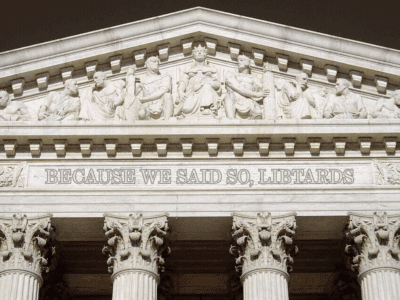Judicial Deference to Agencies: A Timeline
Decisions about judicial deference to agencies on legal issues didn’t begin or end with Chevron.
The Supreme Court is currently considering whether to overrule the Chevron doctrine. Chevron requires courts to defer to an agency’s reasonable interpretation of an ambiguous statute. We should know by the end of next month whether the current conservative super-majority on the Court will overrule Chevron.
In the meantime, it’s illuminating to put the current dispute in the context of the last 80 years of judicial doctrine regarding deference to agencies on issues of law. As this timeline shows, the Supreme Court’s engagement with this issue has been long and complex.
1944.
Skidmore v. Swift & Co. decided by Supreme Court. The Court holds that the agency’s decisions “constitute a body of experience and informed judgment to which courts and litigants may properly resort for guidance” in interpreting statutes. The degree of deference to the agency’s view will depend upon the thoroughness evident in its consideration, the validity of its reasoning, its consistency with earlier and later pronouncements, and all those factors which give it power to persuade, if lacking power to control.”
1945.
Court considers deference to agency interpretations of its own regulations in Bowles v. Seminole Rock & Sand Co. The agency’s view has “controlling weight unless it is plainly erroneous or inconsistent with the regulation.”
1974.
Bumpers Amendment introduced in Senate, intended to eliminate judicial deference to agencies on questions of law.
1979.
Bumpers Amendment passes Senate but dies in House.
1982.
Modified Bumpers Amendment passes Senate, is strongly opposed by Carter Administration, dies in House.
1984.
Chevron, USA v. NRDC articulates the Chevron doctrine, under which a court must defer to an agency’s reasonable interpretation of an ambiguous statute.
1997.
Auer v. Robbins reaffirms the Seminole Rock rule that courts must accept an agency’s interpretation of its own regulation unless the interpretation is plainly erroneous. Justice Scalia writes the opinion for a unanimous Court.
2000.
Supreme Court decides FDA v. Brown & Williamson Tobacco, declining to exercise Chevron deference when a regulation involves an issue of exceptional importance.
2001.
United States v. Mead Corp. holds that Chevron deference applies only to agency actions having the force of law. All other agency interpretations of statutes are subject to Skidmore deference.
2006.
Gonzales v. Oregon declines to give Auer deference when a regulation merely tracks the statutory language.
2009.
In National Cable & Telecommunications v. Brand X, the majority opinion by Justice Thomas applies Chevron deference, even though the agency’s position had flip-flopped.
2013.
City of Arlington v. FCC holds, in an opinion by Justice Scalia, that Chevron deference applies even to issues of whether the agency has any jurisdiction over a matter. Notably, Chief Justice Roberts and Justice Alito and Kennedy dissent, the first real crack in the Court’s acceptance of Chevron.
2020
In Kisor v. Wilkie, the Court rebuffs a call to overrule Auer. The plurality opinion by Justice Kagan recalibrates Auer, limiting deference to cases when a court has exhausted all traditional tools of interpretation and limiting deference to interpretations based on an agency’s authoritative, expert judgment. Chief Justice Roberts concurs with the recalibrated test, making a majority for that part of Kagan’s opinion.
2024
The Supreme Court considers whether to overrule Chevron in two cases, Relentless v. Dept. of Commerce and Loper Bright Enterprises v. Raimondo.
Stay tuned for further developments.







Reader Comments